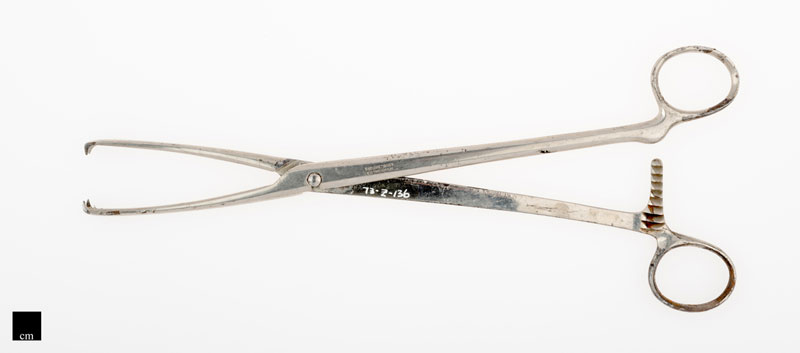The following 19 listings were found:
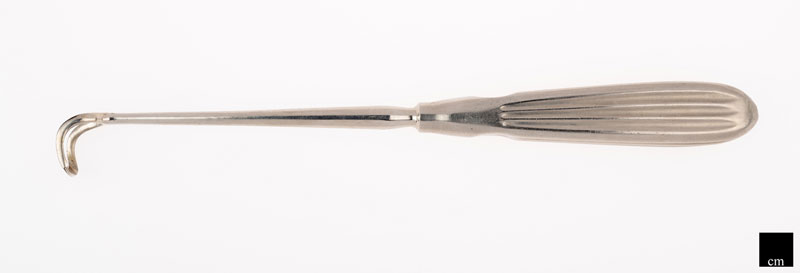
Adenoid Curette
Used to scrape the pad of tissue from the back wall of the nasopharynx. MHSNS curette donor is unknown. MHSNS Identification Numbers: 73-2-35 and S3-111.

Bone Cutting Forceps
Used to grasp, manipulate, and extract bone. Introduced by French Surgeon Ambrose Paré circa 1550. MHSNS forceps donor is unknown. MHSNS Identification Numbers: 73-1-71 and S3-187.

Carbolic Acid Spray Unit
Used to spray carbolic acid on open wounds, on surgical instruments and bandages, as well as on the hands of surgeons and nurses during and after surgical operations. Introduced by Dr. Joseph Lister at the University of Glasgow circa 1867. MHSNS Spray Unit was donated by Dr. John Stewart who had received it as a gift from his mentor Dr. Lister.

Case of Scalpels of different sizes
Used to create an incision in body tissue. Introduced by Greek and Roman surgeons. The modern two-piece scalpel was invented by an engineer named Morgan Parker in 1914. MHSNS set of scalpels manufactured by Down Bros Ltd, London. MHSNS Identification Numbers 76-2-2 and S3.1.

Dr. John Stewart's Microscope
Used for viewing anatomical material on glass slides. Introduced by Antonie van Leeuwenhoek in Holland circa 1680. First used in Nova Scotia by Dr. Daniel McNeill Parker circa 1850. MHSNS microscope donated by Dr. John Stewart. Manufactured by E. Seit in Wexlar, Germany. MHSNS Identification Number 2021-003/02-002.
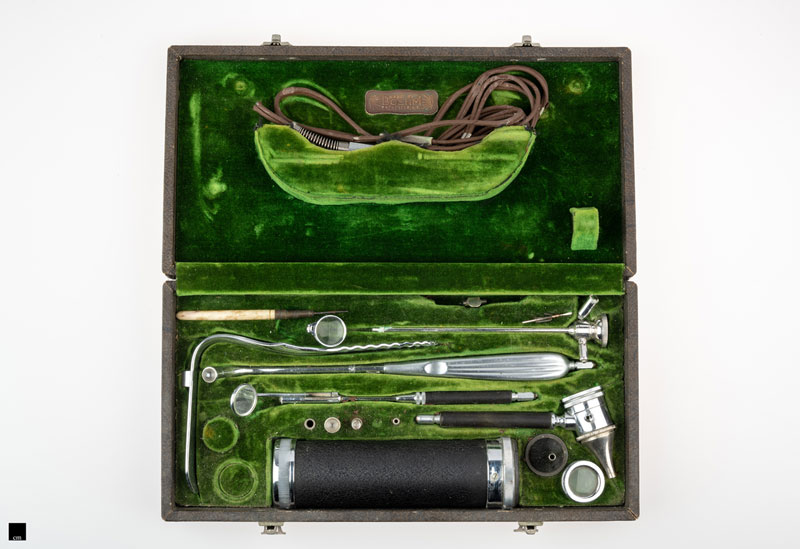
Ear, Nose, and Throat Instruments
Used for examining the ear, nose, and throat. The Otoscope was introduced by Adam Politzer in the 1820s. Nasal Specula were introduced in the 1880s. Manufactured by Boehm of Rochester, New York. No MHSNS Identification number.
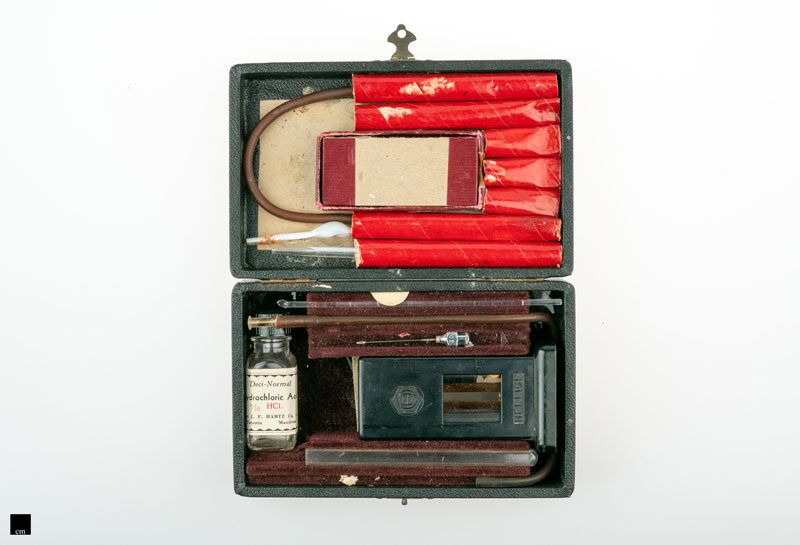
Hemometer
Used for measuring hematocrit or the concentration of oxygen in blood. Manufactured by Hellige in the United States. Donated by Dr. W.B. Stewart from New Brunswick. MHSNS Identification Number 2021-001/001-001.
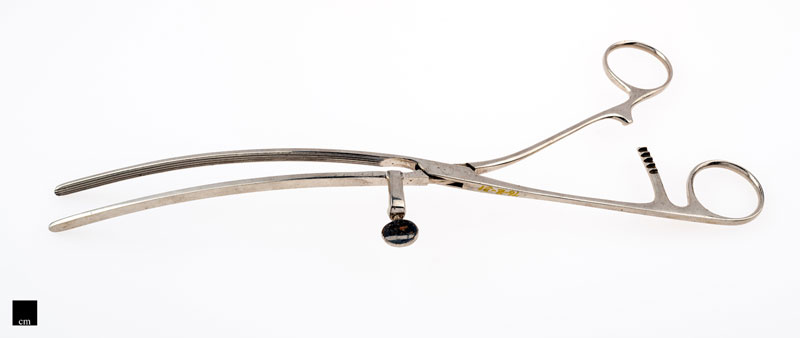
Lane Gastroenterostomy Forceps
Used in an operation in which the small intestine is diverted to an artificial opening in the abdominal wall or another part of the intestine. MHSNS Identification Numbers 76-Z-31- S3.129.
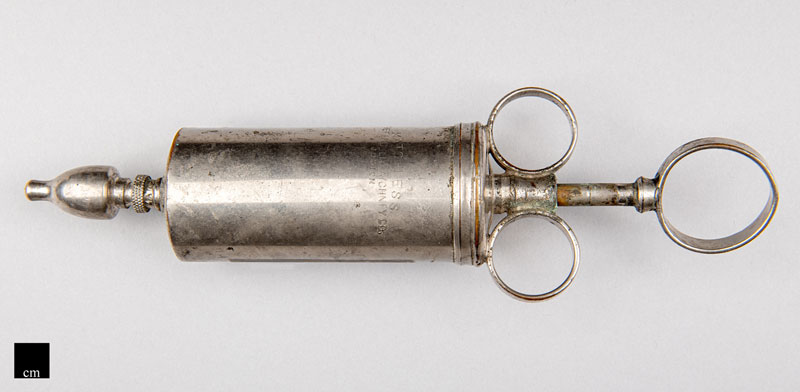
Metal Syringe
Used to inject and withdraw substances into and from the human body. Have been in use since the time of Galen and were made of metal and glass prior to the invention of plastic in 1907. Presently on loan to Parks Canada at Citadel Hill.

Monaural and Binaural Stethoscopes
Monaural Stethoscope (bottom) - Introduced by Dr. René Laennec in Paris circa 1816. First used in Nova Scotia by Dr. Rufus Black in 1836. Used for listening to cardiac and respiratory sounds using one ear. MHSNS Identification Number: 73-Z-230.
Binaural Stethoscopes - Used for listening to cardiac and respiratory sounds using both ears. Introduced by Dr. Arthur Leared in Dublin in 1851. Began to be used in Nova Scotia in the 1860s.

Needle Holder
Introduced in the 1880s. From the Collection of Instruments belonging to Dr. John Stewart. MHSNS Identification Numbers 73-Z-319 and S3-120.

Pelvimeter
Used for measuring the size of a woman's pelvis for childbirth. Probably began to be used in Nova Scotia in the nineteenth century. MHSNS Identification number: G1-59.
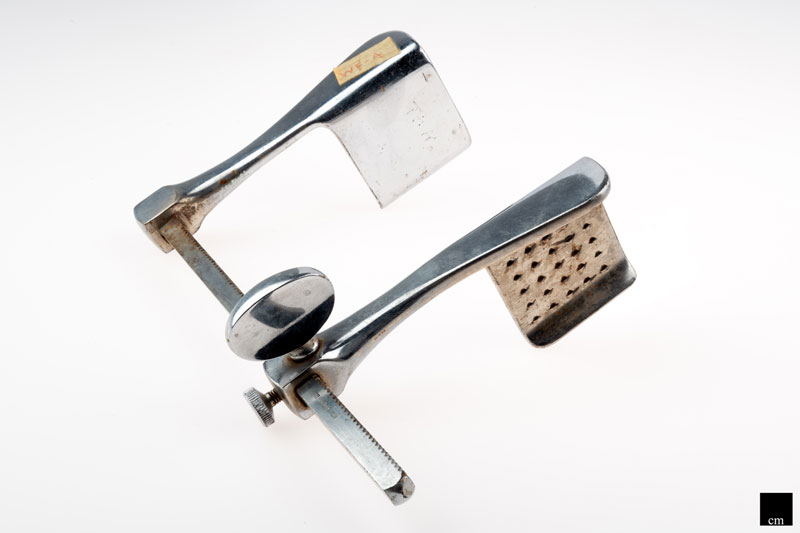
Rib Retractor
Used to separate ribs in thoracic surgery. Introduced by the French Surgeon Theodore Truffier in 1914. Manufactured by Pilling in Philadelphia. MHSNS Identification Number: S3-108.
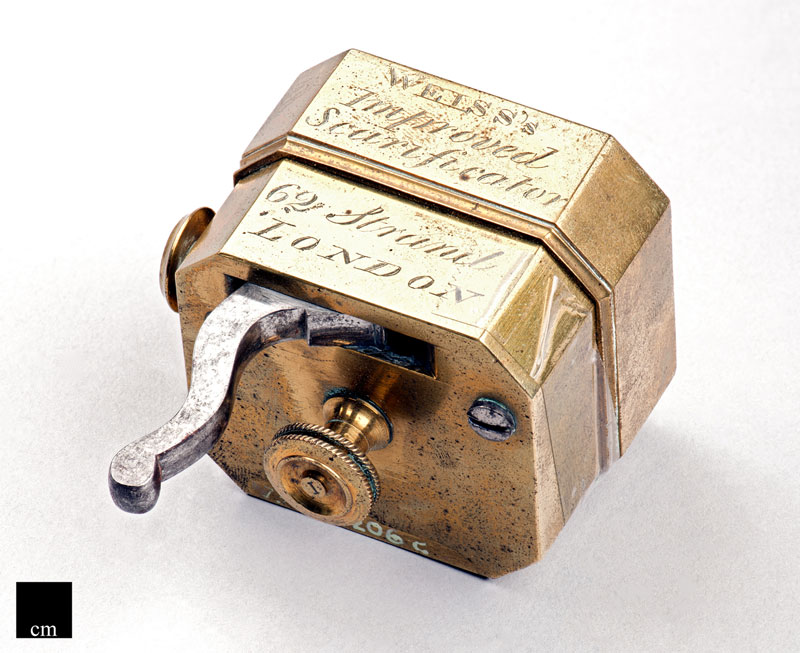
Scarificator Device
Used to create multiple cuts in the skin to cause bleeding. Introduced by German physicians in the 1790s. MHSNS Device manufactured by Weiss in London. MHSNS Identification Number 72-Z-206C.

Set of Amputation Instruments
Used to amputate the limbs of a patient. Introduced by the Greeks and further developed by the French Surgeon, Ambrose Paré, circa 1540. Includes a bone saw, several knives, and a tourniquet. MHSNS Amputation Set donated by Dr. John Stewart. Presently on loan to Parks Canada at Citadel Hill.







